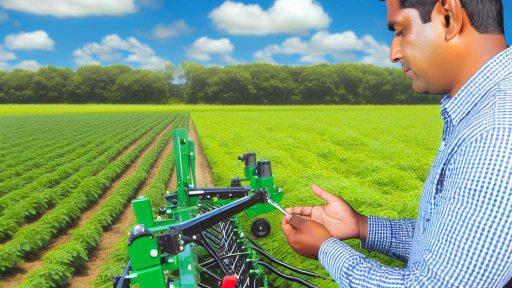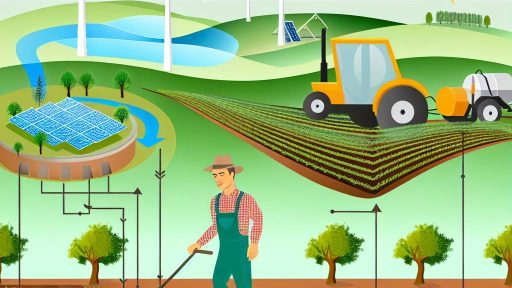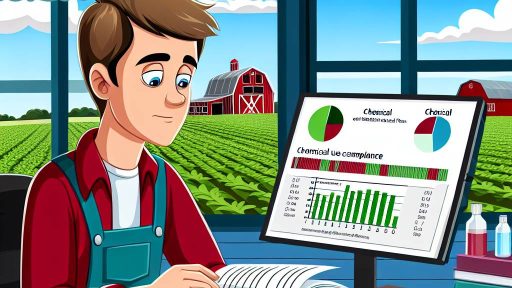Introduction to Animal Welfare Laws
Definition of Animal Welfare Laws
Animal welfare laws protect the well-being of animals in various settings.
These laws set standards for treatment and care of animals.
They encompass both domestic and wild animals.
Additionally, animal welfare laws affect different industries, including farming.
Moreover, these laws vary significantly across regions and countries.
Scope of Animal Welfare Laws
The scope of animal welfare laws includes several crucial areas.
These areas typically involve housing, nutrition, and veterinary care.
Animal welfare laws also address the humane treatment of animals during transportation.
Furthermore, they regulate practices during slaughtering processes.
Compliance with these laws is essential for ensuring ethical treatment.
Importance of Animal Welfare Laws in Farming
Animal welfare laws play a significant role in farming practices.
They help uphold ethical standards for livestock treatment.
Consequently, these laws promote the overall health of farm animals.
Healthy animals contribute to better food quality, benefiting consumers.
In addition, adherence to these laws can enhance farmers’ reputations.
Transform Your Agribusiness
Unlock your farm's potential with expert advice tailored to your needs. Get actionable steps that drive real results.
Get StartedCurrent Trends in Animal Welfare Legislation
Recent trends show a growing emphasis on animal welfare globally.
Many countries are updating their legal frameworks to improve animal rights.
For instance, some regions have introduced stricter guidelines for confinement practices.
Engagement with consumers is also rising, leading to increased demand for humane farming.
As a result, farmers are adapting their practices to meet these expectations.
Historical Development of Animal Welfare Laws in Farming
Early Legislation
The movement for animal welfare began in the 19th century.
Initially, laws focused on preventing cruelty to working animals.
In 1822, the Cruel Treatment of Cattle Act appeared in the UK.
This law marked one of the first legal recognitions of animal welfare.
Subsequently, other countries began to form similar laws.
The Rise of Advocacy Groups
In the late 19th century, advocacy groups emerged significantly.
Organizations like the American Society for the Prevention of Cruelty to Animals were founded.
These groups sought stronger protection for farm animals.
They played a critical role in raising public awareness about animal rights.
Modern Legislation
Today, many countries have established comprehensive animal welfare laws.
These laws often include specific provisions for farming practices.
The Animal Welfare Act in the United States illustrates this trend.
This act regulates the treatment of animals in agriculture, research, and exhibition.
Impact on Farming Practices
Animal welfare laws directly influence farming methods and operations.
Farmers must adhere to humane treatment standards for their livestock.
Moreover, many consumers now demand higher animal welfare standards.
This demand has led to the rise of organic and free-range farming practices.
Global Variations in Animal Welfare Standards
Animal welfare standards vary significantly worldwide.
In Europe, regulations tend to be stricter than in some other regions.
Showcase Your Farming Business
Publish your professional farming services profile on our blog for a one-time fee of $200 and reach a dedicated audience of farmers and agribusiness owners.
Publish Your ProfileFor instance, the European Union has laws that promote animal welfare in farming extensively.
Conversely, some countries still lack effective animal welfare regulations.
These disparities raise important questions about ethics and consumer choices.
Key Legislation Affecting Animal Welfare in Agriculture
Overview of Animal Welfare Laws
Animal welfare laws aim to protect the well-being of animals raised for food or other purposes.
These laws ensure that animals receive proper care, treatment, and living conditions.
Legal protections vary greatly by region and country.
Farmers must comply with these regulations to promote ethical practices.
Federal Animal Welfare Regulations
The Animal Welfare Act (AWA) serves as the primary federal law governing animal treatment in the United States.
This legislation was enacted in 1966, focusing initially on laboratory animals.
Over the years, it has expanded to include various agricultural animals.
The AWA sets standards for housing, feeding, and veterinary care.
However, it excludes many farm animals, limiting its effectiveness.
State-Level Legislation
Many states have enacted their own laws to enhance animal welfare protections.
California’s Proposition 2 established minimum space requirements for certain animals.
Similarly, Massachusetts passed legislation banning certain confinement practices.
State laws often address specific concerns unique to local farming practices.
Consequently, farmers must stay informed about their state’s regulations.
International Standards and Agreements
Global initiatives, such as the World Organisation for Animal Health (OIE) guidelines, influence national laws.
These standards advocate for the humane treatment of animals worldwide.
Countries often align their laws with OIE recommendations to facilitate trade.
Such alignment promotes the welfare of animals globally and improves industry standards.
Enforcement and Compliance
Compliance with animal welfare laws remains critical for farmers.
Regular inspections are conducted by governmental agencies to ensure adherence.
Farmers who violate these laws may face penalties, including fines and license suspensions.
Moreover, public awareness of animal welfare issues has increased significantly.
This visibility can affect market demand and consumer choices.
The Role of Advocacy Groups
Numerous organizations advocate for stronger animal welfare laws.
The Humane Society and PETA are prominent examples of these advocacy groups.
These organizations educate the public and lobby for legislative changes.
They work to raise awareness about the conditions many farm animals endure.
Consequently, farmer engagement with these groups can enhance outreach efforts.
Uncover the Details: Maximizing Farm Profitability with Agricultural Insurance
The Role of Animal Welfare Organizations in Advocacy
Advocacy Initiatives
Animal welfare organizations actively promote humane treatment of animals.
They engage in legislative advocacy to influence animal welfare laws.
Moreover, these organizations empower communities to protect animal rights.
Through campaigns, they raise awareness of animal welfare issues.
As a result, they motivate individuals to participate in advocacy efforts.
Collaboration with Farmers
Animal welfare organizations often collaborate with farmers.
This partnership facilitates a better understanding of sustainable practices.
Through dialogue, organizations provide resources and training for farmers.
Showcase Your Farming Business
Publish your professional farming services profile on our blog for a one-time fee of $200 and reach a dedicated audience of farmers and agribusiness owners.
Publish Your ProfileSuch cooperation enhances animal husbandry methods in farms.
Ultimately, it leads to improved animal health and welfare standards.
Research and Education
Organizations frequently invest in research to support animal welfare.
They conduct studies that highlight best practices in farming.
Through education, they disseminate valuable information to the public.
This helps increase awareness of humane treatment protocols.
Consequently, more stakeholders adopt animal-friendly practices.
Legal Assistance and Policy Influence
Animal welfare organizations offer legal assistance in advocacy cases.
They help individuals navigate animal welfare laws effectively.
Additionally, these organizations influence policy change at governmental levels.
They advocate for stronger enforcement of existing laws.
This advocacy leads to more effective animal protection measures.
Community Engagement and Events
Community outreach is crucial for raising awareness about animal welfare.
Organizations host events to educate the public on humane practices.
These events foster connections among animal lovers and advocates.
Furthermore, they encourage volunteerism and community support.
Through these efforts, organizations build a network of dedicated supporters.
Explore Further: How Farmers Can Benefit from Solar Energy Incentives
Impact of Animal Welfare Laws on Farming Practices
Introduction to Animal Welfare Laws
Animal welfare laws aim to protect the well-being of farm animals.
These laws establish minimum standards for animal care.
Furthermore, they address various aspects of farming practices.
Changes in Farming Practices
Farming practices have evolved significantly due to these laws.
Farmers now focus more on humane treatment of animals.
This shift often requires changes in housing and feeding systems.
Consequently, animals receive better care and living conditions.
Updated Facilities
Producers invest in spacious and well-ventilated structures.
Consequently, livestock experience reduced stress and enhanced health.
Modern equipment aids in providing better animal management.
Improved Animal Diets
Animal welfare laws encourage nutritious feeding practices.
Farmers provide balanced diets tailored to specific needs.
This results in healthier animals and more sustainable production.
Economic Impacts on Farmers
Adhering to animal welfare laws may increase operational costs.
Farmers often invest in new technologies and practices.
However, they may also see long-term financial benefits.
Healthier animals can lead to higher productivity and profitability.
Increased Market Opportunities
Many consumers prefer ethically sourced animal products.
Therefore, farmers who comply with welfare laws can tap into premium markets.
This trend can enhance their brand reputation and sales.
Financial Support and Incentives
Some governments offer subsidies to farmers who meet welfare standards.
This can alleviate some of the financial burdens associated with compliance.
Showcase Your Farming Business
Publish your professional farming services profile on our blog for a one-time fee of $200 and reach a dedicated audience of farmers and agribusiness owners.
Publish Your ProfileAdditionally, grants may help modernize farming operations.
Consumer and Community Perspectives
Public awareness of animal welfare has significantly increased.
Consumers are more discerning about their food sources.
This shift has led to greater demand for transparency in farming practices.
Community Engagement
Farmers often engage with their communities regarding animal welfare.
Educational programs can help bridge gaps in understanding.
Such initiatives build trust and strengthen community ties.
Shifts in Consumer Behavior
Growing consumer concern influences buying choices.
Consequently, many opt for products from welfare-friendly farms.
This trend encourages more farmers to adopt humane practices.
You Might Also Like: A Comprehensive Guide to Animal Welfare Regulations for Farmers
Economic Consequences of Compliance with Animal Welfare Standards
Understanding the Financial Impact
Compliance with animal welfare standards incurs significant costs for farmers.
Investment in facilities is often required to meet these standards.
Farms must upgrade housing and equipment to create suitable living conditions.
This can strain the budgets of small to mid-sized farms particularly.
Potential Increased Operational Expenses
Operational costs may rise due to increased labor requirements.
Farmers often need to train staff on new welfare practices.
Additionally, maintaining higher standards involves more intensive care for animals.
All these factors lead to increased operational expenses.
Market Competitiveness and Pricing Adjustments
Higher compliance costs can affect market pricing strategies.
Farmers may feel compelled to raise product prices to maintain margins.
This can reduce competitiveness in regions with lower welfare standards.
Consumers increasingly demand humane products, which can justify higher prices.
Long-term Financial Benefits of Compliance
Investing in animal welfare can lead to long-term financial advantages.
Enhanced animal welfare often results in healthier livestock.
Healthier animals can lead to reduced veterinary costs and better productivity.
This may ultimately increase farm profitability over time.
Identifying Financial Support Options
Many governments and organizations offer financial support for compliance.
Farmers can benefit from grants and subsidies aimed at welfare improvements.
Additionally, some banks provide loans specifically for upgrading facilities.
Accessing these resources can alleviate some financial burdens.
Learn More: Integrating Conservation Programs Into Farm Management

Case Studies: Successful Implementation of Animal Welfare Laws
Improving Conditions for Dairy Cows
In Wisconsin, dairy farms embraced new animal welfare laws with enthusiasm.
Creekside Dairy implemented loose housing systems for their cows.
This change increased cow comfort and milk production significantly.
Moreover, the farm reported fewer cases of health issues among the herd.
Farmers observed better cow behavior and reduced stress levels.
Consequently, public perception improved, leading to enhanced sales.
Enhancing Chicken Welfare
In California, new laws regulated the treatment of egg-laying hens.
Sunny Acres Farm introduced enriched cage systems for their flocks.
Showcase Your Farming Business
Publish your professional farming services profile on our blog for a one-time fee of $200 and reach a dedicated audience of farmers and agribusiness owners.
Publish Your ProfileThis provided hens with more space and access to enrichment activities.
As a result, egg production remained stable while ensuring hen welfare.
Additionally, consumers appreciated the humane treatment of the animals.
This shift led to increased demand for their eggs at local markets.
Success in Pig Farming
In North Carolina, a pioneering farm implemented new welfare protocols.
Maple Leaf Farms transformed their pig housing to meet welfare standards.
The farm utilized group housing systems for pregnant sows.
This change led to improved sow behavior and reduced aggression.
Furthermore, the farm reported growth in the overall health of the pigs.
Ultimately, they gained recognition for their commitment to animal welfare.
Overall Impact on Farming Practices
These case studies illustrate the positive effect of welfare laws.
Farmers increasingly recognize the value of animal well-being.
Moreover, they understand that profitability can align with humane practices.
Industry standards are rising thanks to the adoption of these laws.
As a result, consumers are more willing to support humane farming.
These examples demonstrate a successful model for the future of farming.
Future Trends in Animal Welfare Legislation and Farming
Emerging Legislative Frameworks
New animal welfare laws are taking shape globally.
These laws aim to elevate the standards of animal care in farming.
Governments increasingly focus on humane treatment across all animal industries.
Moreover, they strive to align legislation with public sentiment on animal rights.
Technological Innovations in Farming
Farming technology is evolving rapidly.
Farmers are adopting new tools to enhance animal welfare.
For instance, sensors monitor animal health continuously.
Additionally, artificial intelligence optimizes feeding and housing conditions.
Such technologies help farmers comply with stricter regulations.
Consumer Influence on Animal Welfare Practices
Consumer demand drives changes in farming practices.
More consumers prefer products sourced from humane farming systems.
Consequently, farmers are reviewing their operations for compliance.
Labeling plays a significant role in informing consumer choices.
Higher transparency builds consumer trust and encourages ethical practices.
Global Collaboration and Standards
International cooperation is essential for advancing animal welfare.
Countries are sharing data and best practices to improve legislation.
Global organizations also work to establish unified animal welfare standards.
Such collaborations help address common challenges across regions.
Ultimately, they promote higher animal care standards worldwide.
Challenges and Controversies Surrounding Animal Welfare Laws
Regulatory Complexities
Animal welfare laws vary greatly between regions and countries.
This inconsistency creates confusion for farmers and consumers alike.
Furthermore, differing standards can lead to compliance challenges for agribusinesses.
Some farmers struggle to understand the specific requirements imposed by these laws.
As a result, many advocate for uniform regulations across jurisdictions.
Showcase Your Farming Business
Publish your professional farming services profile on our blog for a one-time fee of $200 and reach a dedicated audience of farmers and agribusiness owners.
Publish Your ProfileEconomic Impacts on Farmers
Implementing animal welfare practices often requires significant financial investment.
Small-scale farms may find these costs particularly burdensome.
Consequently, some farmers resist adopting new welfare standards.
They fear losing competitive advantages in the marketplace.
Moreover, increased operational costs may lead to higher prices for consumers.
Public Perception and Advocacy
Public attitudes toward animal welfare are shifting rapidly.
Consumers are increasingly demanding humane treatment of farm animals.
This demand places pressure on farmers to change their practices.
Advocacy groups play a crucial role in raising awareness about animal welfare issues.
However, some farmers feel that these groups do not fully understand agricultural realities.
Scientific and Ethical Considerations
Debates often arise regarding the scientific basis for certain welfare standards.
Some argue that existing laws may not align with the latest research findings.
Moreover, ethical viewpoints on animal rights continue to evolve.
This evolution raises questions about how we define humane treatment.
Consequently, reaching a consensus on welfare standards remains a complex issue.
Challenges in Enforcement
Enforcement of animal welfare laws can be inconsistent and ineffective.
Many regions lack adequate resources to monitor compliance effectively.
As a result, violations may go unnoticed or unaddressed.
This inconsistency can foster resentment among compliant farmers.
Additionally, the lack of clear enforcement mechanisms leads to confusion.
Additional Resources
Regulations and Directives | Home
Farm Animal Welfare Policies Cover Breeding Sows, Veal Calves, or …




